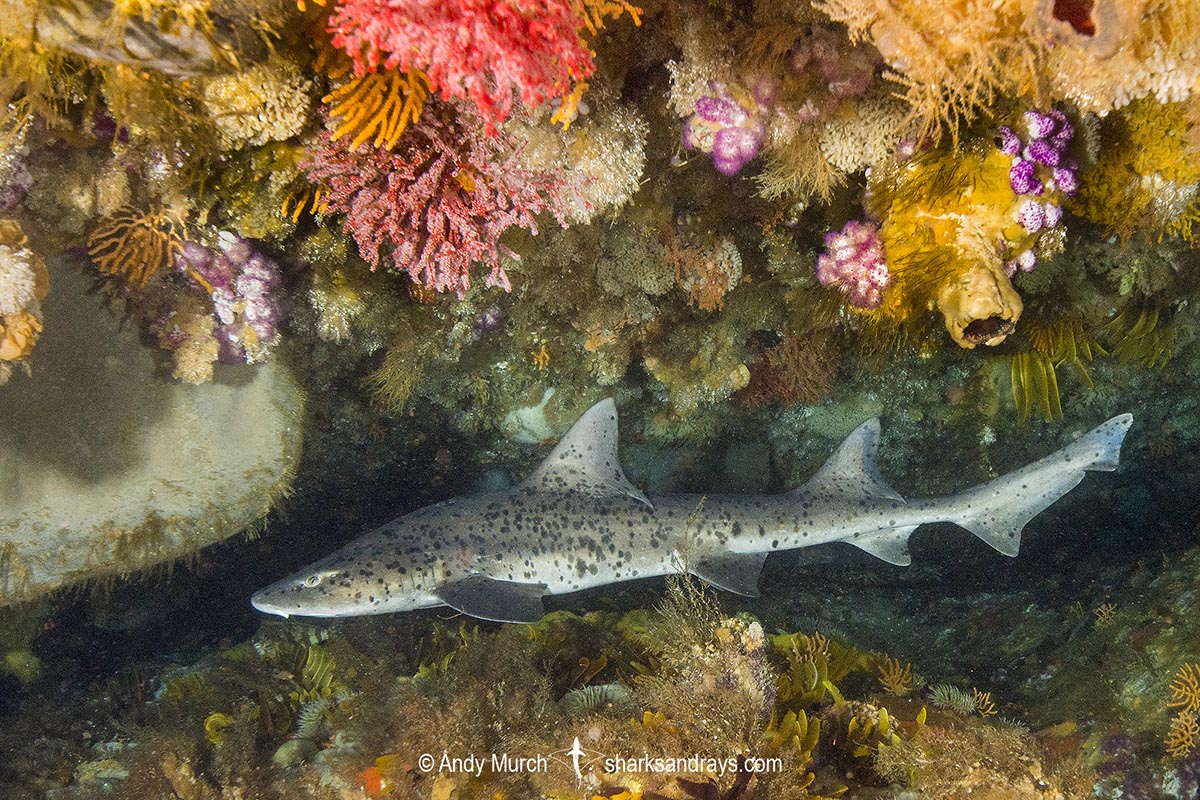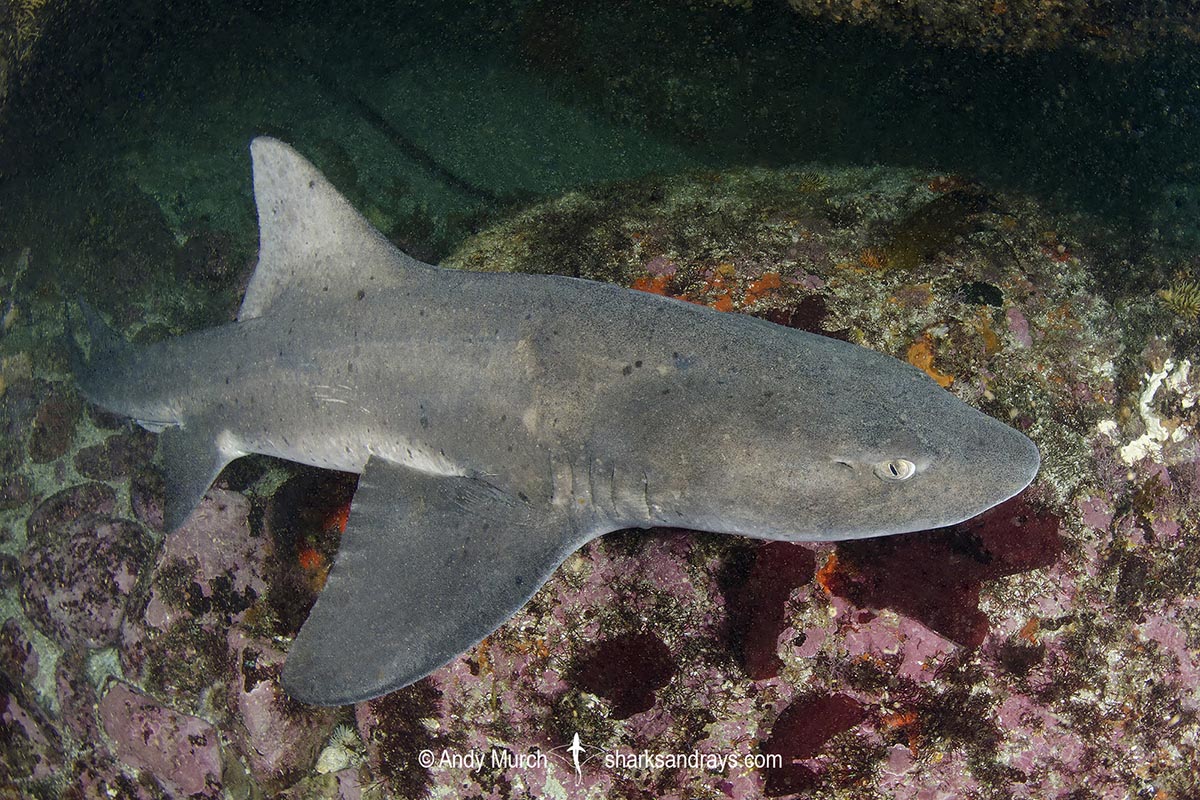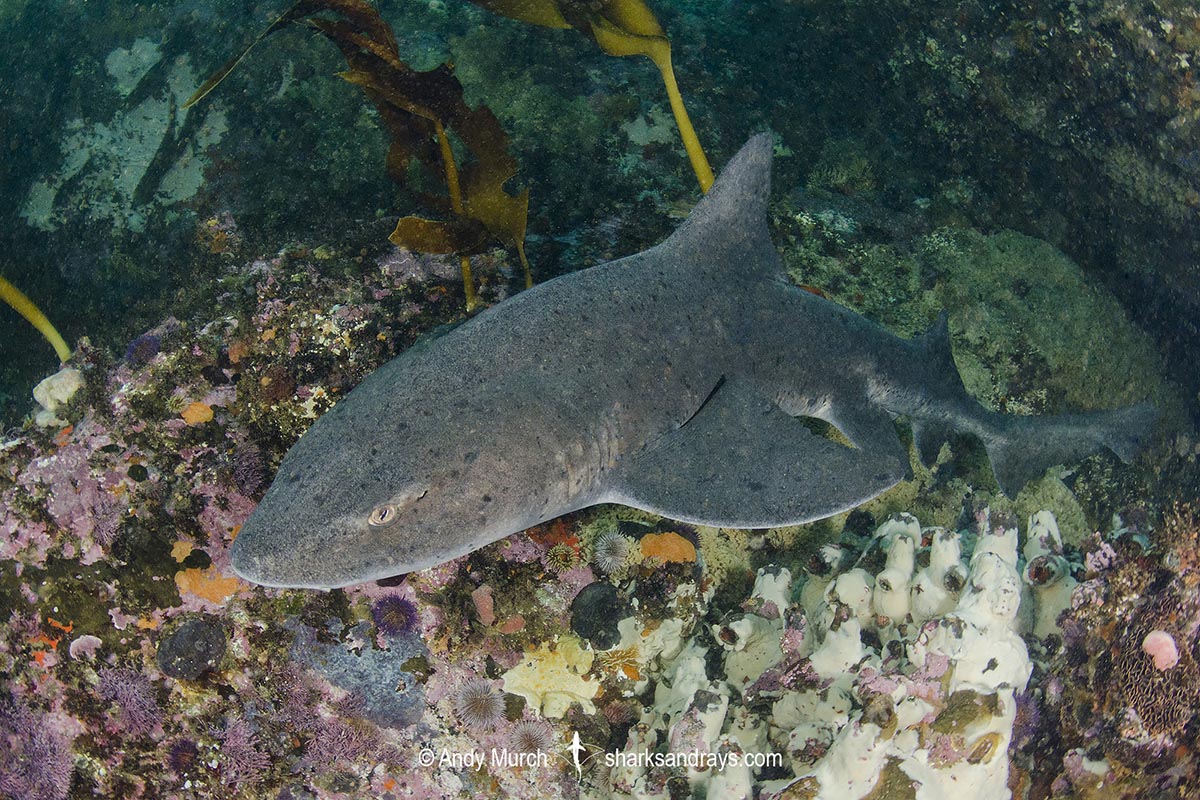Common names
Spotted Gully Shark, Sharptooth Houndshark.
Binomial
Triakis megalopterus.
Synonyms
Mustelus megalopterus, Mustelus natalensis, Mustelus nigropunctatus, Triakis natalensis.
Identification
Body slender. Snout fairly short and somewhat pointed. Upper labial furrows the same length or slightly longer than lower. Small, visible spiracle behind eye. First dorsal fin origin over pectoral fin free rear tip. Second dorsal fin larger than anal fin. Second dorsal origin slightly posterior to pelvic fin free rear tip. Lower caudal lobe indistinct but with a rounded apex. Dorsal coloration brown or bronzy with irregular scattered black spots. Spots may be absent in juveniles and in some adults.
Size
Maximum length 208cm. Size at birth 40-45cm.

Conservation Status
LEAST CONCERN
The Spotted Gully Shark (Triakis megalopterus) is vulnerable because it has a late age-at-maturity and a long gestation period. It is frequently caught by recreational line fishers and a minor bycatch component of commercial beach seine, longline, and trawl fisheries, but is generally released alive and post release mortality is thought to be low.

Habitat
A temperate inshore species that inhabits sandy bays, rocky reefs, and kelp forests. usually found within the first 10m but recorded to more than 50m.
Distribution
Spotted gully sharks have a limited range in southern Africa, from Angola in the Atlantic, to KwaZulu-Natal in the Indian Ocean.
Reproduction
An aplacental viviparous species (without a yolk-sac placenta). 5-15 pups per litter.
Diet
Predates mainly on small bony fishes, small sharks, and crustaceans. Younger animals target crustaceans more heavily.
Behavior
Banded houndsharks hide within caves and in deep crevices during the day. Known to school in the summer.
Reaction to divers
Usually very shy, retreating deeper into crevices when disturbed. Will not approach divers in baited situations.
Diving logistics
Miller’s Point near Simonstown (and numerous other spots in False Bay where there is suitable cover), are excellent places to look for spotted gully sharks.
We (Big Fish Expeditions) usually see a few houndsharks in False Bay during our South African Shark Safaris but they are much shyer than the catsharks and sevengill sharks that nonchalantly swim around the reef. Gully sharks can generally be found by looking into caves and swim-throughs. However they usually flee immediately when approached, so the best way to get a close look at them, is to work in buddy pairs, i.e. one diver swims into one end of the swim-through while the other diver waits outside the far end and enjoys/photographs the shark(s) as they exit.

